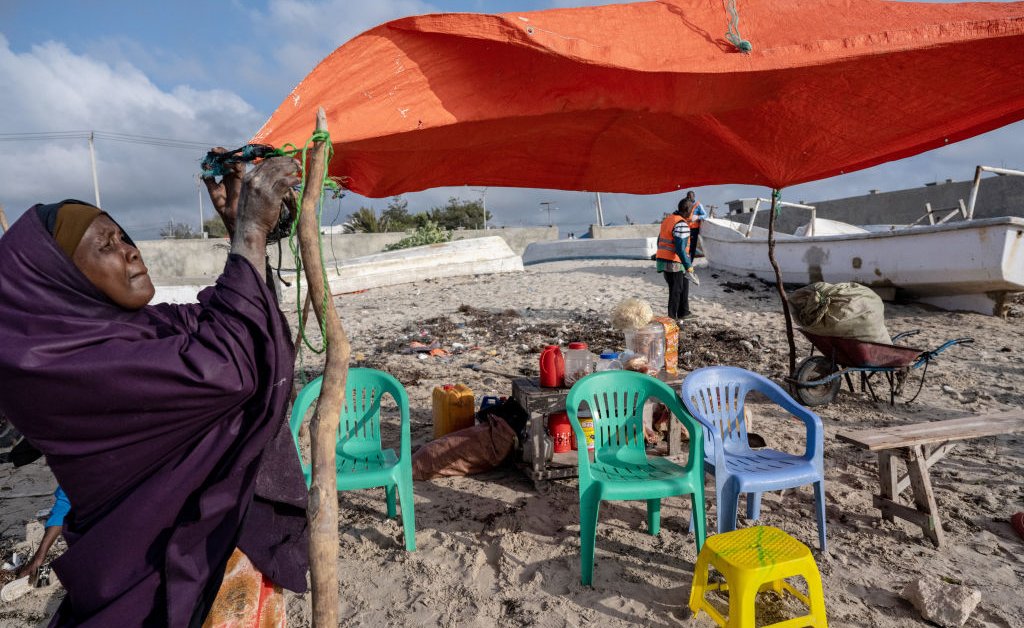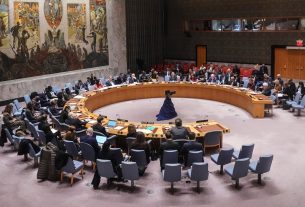One, two, three, four. One person dies of starvation in the time it takes to say those numbers. For many of us, when we feel the pangs of hunger or thirst, sustenance is only a few feet or a few seconds away. In the 60 seconds it takes to microwave popcorn or grab a glass of milk, 15 people around the world have died from starvation. Most of them are children.
Today, we are facing the biggest global hunger crisis in recorded history. A recent report from us at CARE estimates that the global food crisis has become so extreme that 222 million people around the world are already in “urgent need of humanitarian food assistance just to survive.”
The food crisis is also enabling disease to spread. We are seeing a resurgence of cholera in some of the world’s hunger hotspots, including Afghanistan, Haiti, Pakistan, South Sudan, and Syria—a toxic cocktail creating a lethal cycle threatening the lives of millions of already vulnerable people.
Read More: Hardly Anybody Has Noticed Somalia Is Having Its Worst Drought Ever. Here’s Why
Populations who are acutely malnourished have lowered immunity and are more likely to contract cholera. That is just one of the many factors compounding the severity and depth of this crisis. In fact, we could see that figure of 205 million grow by another 620 million people in the next six months. Four seconds will become two, then will become one. These are unprecedented numbers.
Behind each number is a real person facing the slow, painful reality of starvation—and ultimately death. Women like Esther in Zimbabwe—a mother of nine and caretaker of two young grandchildren and two nieces. She struggles daily to feed her family and worries constantly about where she will find food for all of them. And to manage this daily ordeal, Esther does what millions of women and girls do each day—eat last, least, and less often. Esther told CARE, “There are times that I do not eat a full meal, instead I take a small morsel from the meal. The pain in my side is worse if I don’t eat, but I eat less than I need so that the children can eat. I am struggling and worry about where the next meal will come from.”
Sumaya, a 32-year-old mother of four children in a displacement camp in the Somali region of Ethiopia, painted an even more dire picture: “No water, no food, a hopeless life,” she said. “Above all, my children are starving. They are on the verge of death. Unless they get some food, I’m afraid they will die.”
Both Esther and Sumaya’s stories and their sacrifices remind us that access to food is a function of gender—especially in times of crisis. At its core, hunger is a gender inequality issue. Last year, 150 million more women than men went hungry, and this year, we can expect millions more women like Esther and Sumaya to join their ranks.
The irony is that women everywhere play a central role in the production, procurement, processing, purchasing, and preparation of most of the food we consume. Globally, women do 85 to 90% of the cooking, most of the grocery shopping, and invest more of their money in buying food than men do. Women farmers also make up half of the agricultural labor force of developing countries, and women in Africa play a significant role in growing the food the continent eats.
The situation can be improved, but we need action fast. First, people like Esther and Sumaya need emergency food to live now. They also need help getting ready for the next harvest. We can avert the next crisis if we get small-scale farmers, especially women farmers, four key elements they need to help themselves: seeds, locally sourced fertilizers, clean energy, and the knowledge to become climate-smart farmers.
How do we do that? The recent passage of The Global Food Security Act was welcome news and a critical step in staving off the crisis. Beyond funding Feed the Future, which has lifted over 23 million people out of poverty since 2010 by addressing the root causes of poverty, the act recognizes women smallholder farmers and their crucial role in feeding their families and communities. Though, the U.S. and other donors cannot do it all. Country governments must prioritize their own investments in climate-proof agriculture.
At the end of the day, Esther and Sumaya aren’t looking for our sympathy; they are looking for our action. They want us to do what we hope others would do if we were watching our own children starve, if we were feeling the enormous physical pain of starvation, and if we were watching the seconds tick by—one, two, three, four—as our friends and families perish.
More Must-Reads From TIME



